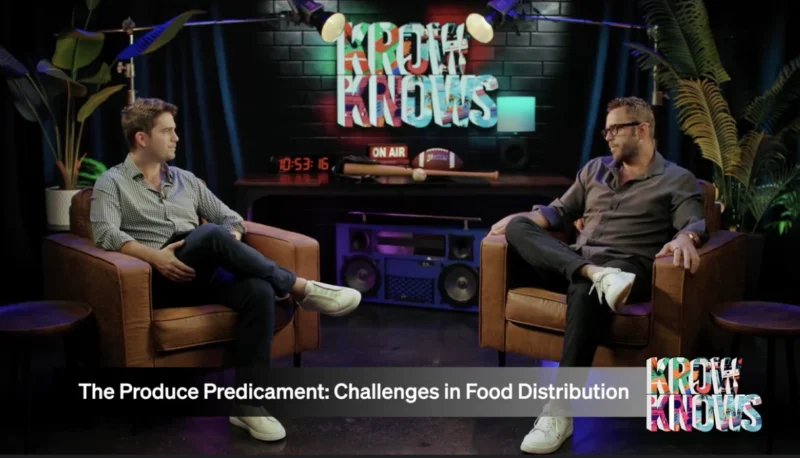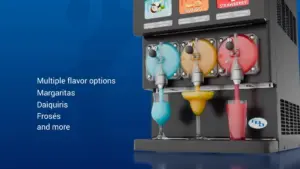Pizza production: Making end-of-line packaging fast, consistent and simple
It is common for frozen pizza startups to generally start out doing everything by hand. Assembling the pizza pie and then stacking the plastic wrapped products into the shipping container is all manual. Gradually, as business grows with demand and the business has more capital to invest, the startup replaces manual pizza-making processes with automation. Usually, the last segment to automate is the end-of-line packaging.
The process to add secondary packaging equipment frequently comes with questions. Based on lessons learned from other steps in their journey to automation, pizza producers want to confirm investing in a case packer that would add efficiency, not unwanted complexity. Here’s a look at how this evolution takes shape, and how a pizza producer can gain efficiency.
The need to update from RSC cases to wraparound cases
Frozen pizza is one of the most popular products in the freezer aisle at the grocery store. In 2019, 197.8 million Americans consumed frozen pizzas, with U.S. sales reaching $292 billion, according to data cited by Statista. Projections show robust growth over the next five years, with sales projected to reach $376.95 billion by 2025. In light of all that opportunity, what frozen pizza startup wouldn’t want a space in the frozen foods aisle of a major retailer like Walmart or Aldi? Contracts with major retailers come with specific requirements for secondary packaging. Most require that the products arrive in easy-open, shelf-ready packaging, sometimes with display features. “This shelf-ready packaging saves retailers time and labor stocking shelves, while also reducing accident rates,” says Jon Hoyme, Regional Sales Manager for Douglas. “For example, producers may want a case design that breaks in half, so frozen pizzas can be set upright on a freezer shelf,” he says.
For the pizza manufacturer, this means manually packing standard RSC shipping cases will no longer meet their needs. Forecasts indicate this will increasingly be the case. According to a recent industry report quoted in Packaging World, retail ready packaging for frozen foods products will see 8.1% annual growth through 2024, the highest of any retail sector. The answer lies in tray and case packers that have the ability to work those side-loading wraparound cases for the shelf-ready packaging retailers want on their shelves. [Learn more about RSC vs wraparound cases]
Fast, fault-free changeovers
Investing in a case packer is no small investment. For a small-to-medium frozen pizza startup, a machine designed for fast, foolproof changeovers is essential. “Unlike a larger pizza manufacturer, it’s not unheard of for smaller manufacturers to have two to three changeovers in a shift to fill the orders,” Hoyme says. That’s because pizzas come in multiple sizes, from 6” to as large as 16”, they can be round or square, or get packed in traditional plastic wrap or set in a boxed container. When that pizza maker is making pies for a private label, the variables in their production line increase. Larger, mainline brands are cranking out various pizza sizes and shapes non-stop at a very high volume, so it’s not unusual for them to need just one or two changeovers a week.
Smaller pizza makers, running at 200 pizzas a minute, every minute wasted on a changeover comes at a high cost. The last thing a growing pizza producer wants is a case packer machine that adds a new set of complications — frequent faults, confusing processes and uneven repeatability. During a changeover, speed is everything, and modern case packers are better designed to switch easily from size to size. For example, Douglas’ most recent model of case packer, the CpONE, has 35% fewer change points and 40% fewer parts. “Those who opt for complete automation, with many change points controlled by a step or servo motor, some changeovers can be completed in as little as 5-7 minutes,” Hoyme says. “That’s where they realize their ROI.” “When they’re making 200 pizzas a minute, that time savings in changeovers adds up over the course of the year pretty quickly,” Hoyme says.
Adequate training
In manufacturing, maintaining adequate staffing is a challenge. One worry that comes with adding a new automation unit is whether the business will be able to find and keep staff to operate the new case packer. Switching from hand packing to automation is a big transition for the workforce, and in a tight labor market, it’s not always an easy transition. That’s why Douglas designs its case packers so it’s simple enough for a non-machinist to operate, and provides plenty of on-site, hands-on training, rather than focusing solely on classroom training. Hoyme says that hands-on instruction means employees retain more of the training, they become more familiar with the machine, and have the ability to “make smart decisions and ask smart questions.” Once the case packer is ready to join the line, the benefits start showing up right away. “There’s savings for the producer, less changeover time and higher production line efficiencies,” Hoyme says.
Getting to OEE
When it’s time to automate end of the line processes, whether you’re in pizza production or another food specialty, Douglas makes it fast and seamless for you to start realizing the overall equipment efficiency (OEE) you expect from your investment. Get in touch with a Douglas team member now to learn more about how our line of innovative secondary packaging solutions can be completely customized to your unique needs
—
For the latest news, videos, and podcasts in the Food & Beverage Industry, be sure to subscribe to our industry publication.
Follow us on social media for the latest updates in B2B!
Twitter – @MarketScale
Facebook – facebook.com/marketscale
LinkedIn – linkedin.com/company/marketscale









